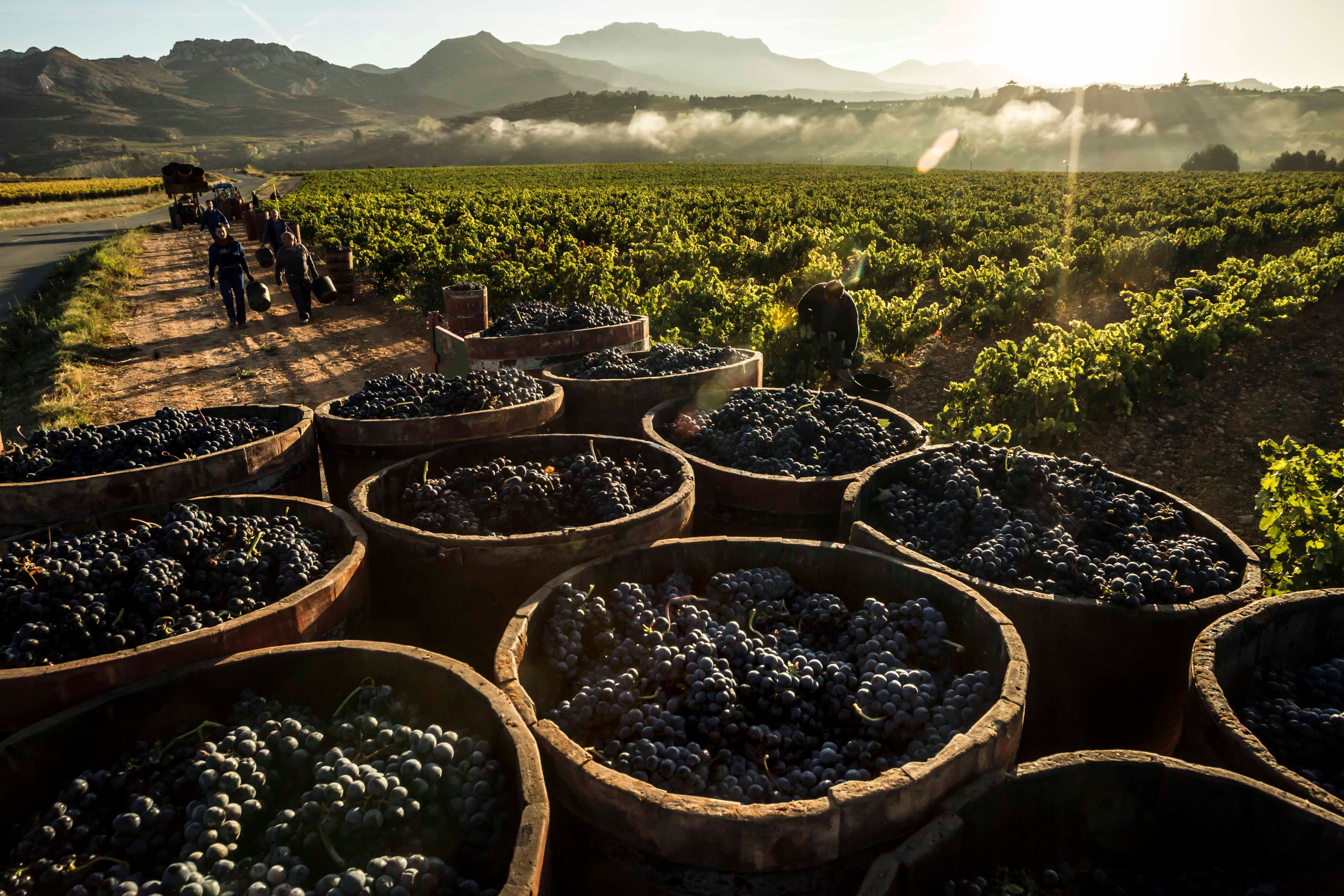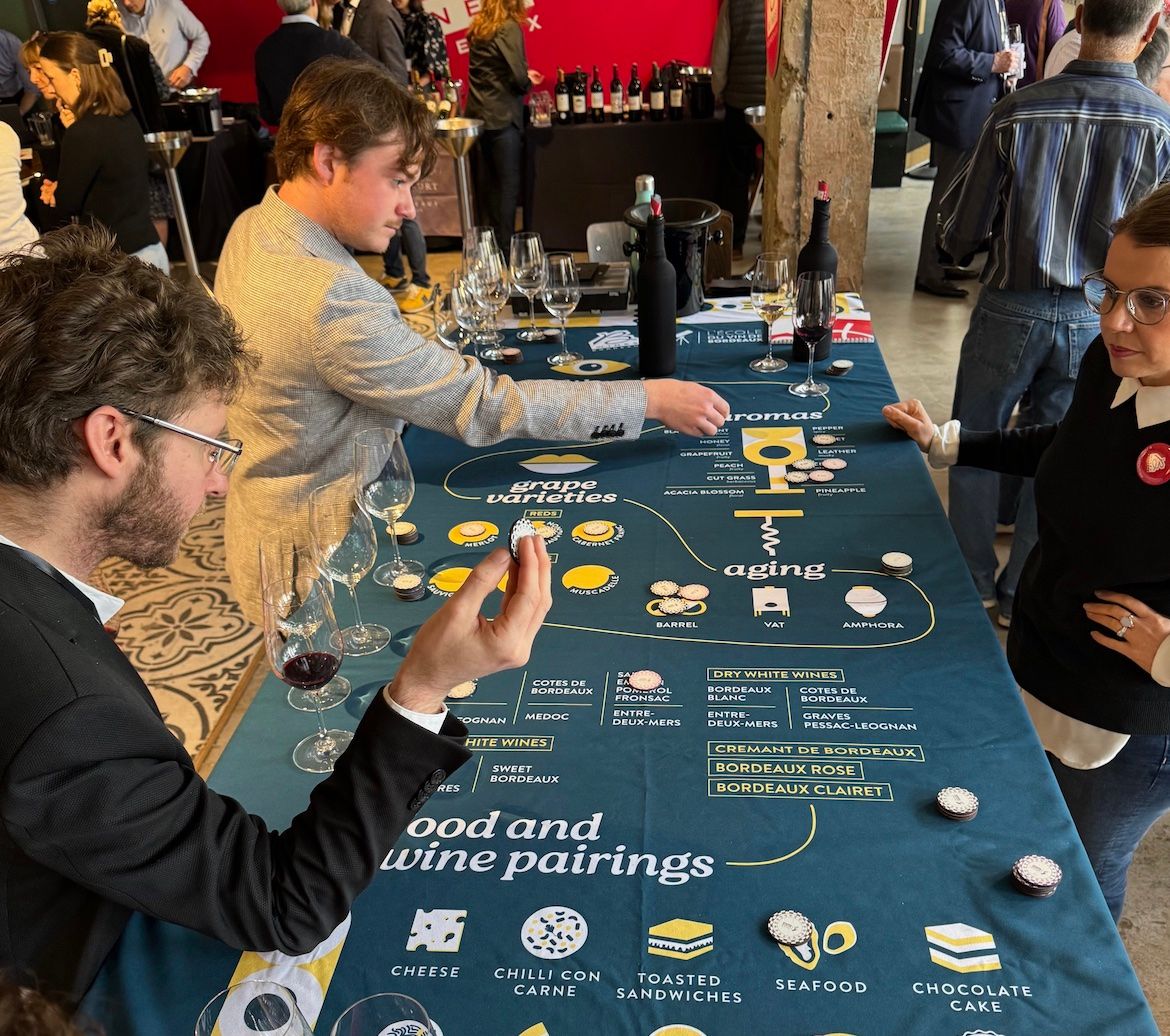“In the 1970s the infamous Te Mata Cream Sherry in Hawke’s Bay was ‘made on a Monday, sold on a Tuesday. Never saw cream, never saw Spain, and barely saw a grape’,” remembered Oz Clarke.
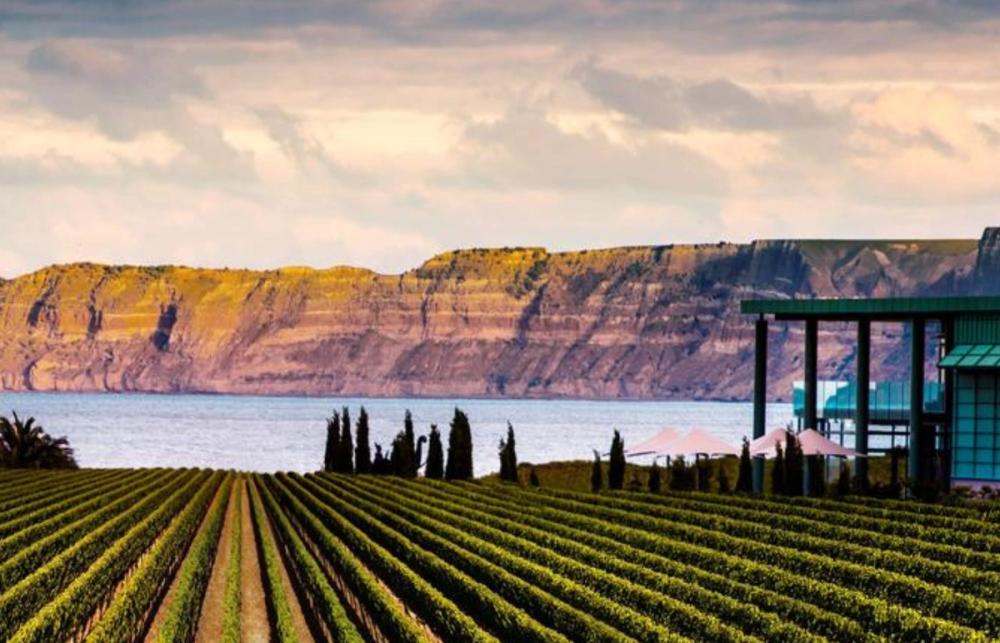
New Zealand is less vulnerable to climate change
I think a lot of people will agree with how I feel about New Zealand. I’ve spent a sum total of 14 days of my life there, so clearly not a lot, but ever since then I just smile every time anyone mentions the place. Getting to visit the annual New Zealand trade tasting day is, therefore, a highlight of the calendar for me. Not only do the wonderful memories of the trip come flooding back, the wines of New Zealand constantly seem to reflect the nation beautifully; cool, classy, high quality, but never pretentious. They make you smile.
We could, if we wanted to, get quite pretentious about New Zealand wine. The geography and geology of New Zealand makes it perfect for viticulture, both present and in the future. Much of the islands sit in what is known as the roaring 40s, the latitude range that can see some of the most tempestuous weather on the globe. These long, thin islands are protected, however, from these westerly storms by mountain ranges, with vines to the east bathed in sunshine, and then surrounded by tempering ocean breezes. Going forward the WHO has reported that New Zealand is less vulnerable to climate change, but yet has more readiness for it than most other countries in the world.
UK wine royalty, Oz Clarke, was in attendance on the day. Clarke, a self-confessed lover of New Zealand’s wine for many years, spent two weeks at the end of 2023 touring the country and sampling some of the finest wines across the regions. During his masterclass (that may have run over a tad due to Clarke’s obvious enthusiasm for his subject) he revealed that he was, as ever, suitably impressed with the standard of the wines he encountered.
“To be so blessed with prime vineyard sites and regions, each with different nuances but all capable of high-quality wine is unique,” exclaimed Clarke. “I think, north to south, it’s only New Zealand that can achieve this.”
Resilient trading figures boost for winemakers
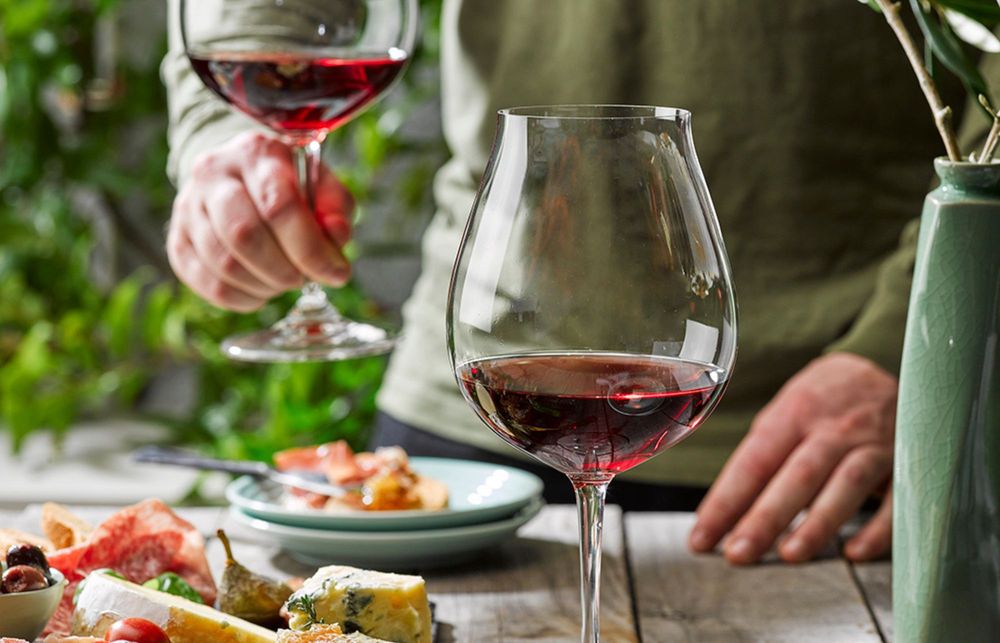
The reason we praise the wines is for the balance, the elegance, the perfume, the drinkability and the amazing food friendliness
The trade tasting gave the team at New Zealand Wine a perfect opportunity to release the latest UK trading figures to the press. There is clearly a case for renewed optimism in 2023, following a difficult 2022 for global wine trade. New Zealand wine is once again outperforming its peers in the UK market with 7.7% lift in sales value (+5.6% in volume) in 2023 compared to an industry average of +2.2% (-2.9% in volume). It remained second only to last year’s Italian juggernaut in Rate of Sale statistics, a key indicator for those stocking independent shelves and wine lists up and down the country.
Arguably the statistic that gives most pride to the NZ industry is the price premium its wines command. 2023 figures reaffirmed the 25% premium for the average bottle of Kiwi wine sold in the UK (£11.10 per litre vs. £8.88 peer average). This is all the more remarkable, noted Clarke, given where the New Zealand industry was just 50 years ago.
“In the 1970s the infamous Te Mata Cream Sherry in Hawke’s Bay was ‘made on a Monday, sold on a Tuesday. Never saw cream, never saw Spain, and barely saw a grape’,” remembered Clarke. “(For New Zealand wine) to have such a strong brand in such a short time is truly remarkable.”
New Zealand Sauvignon Blanc still rules this roost
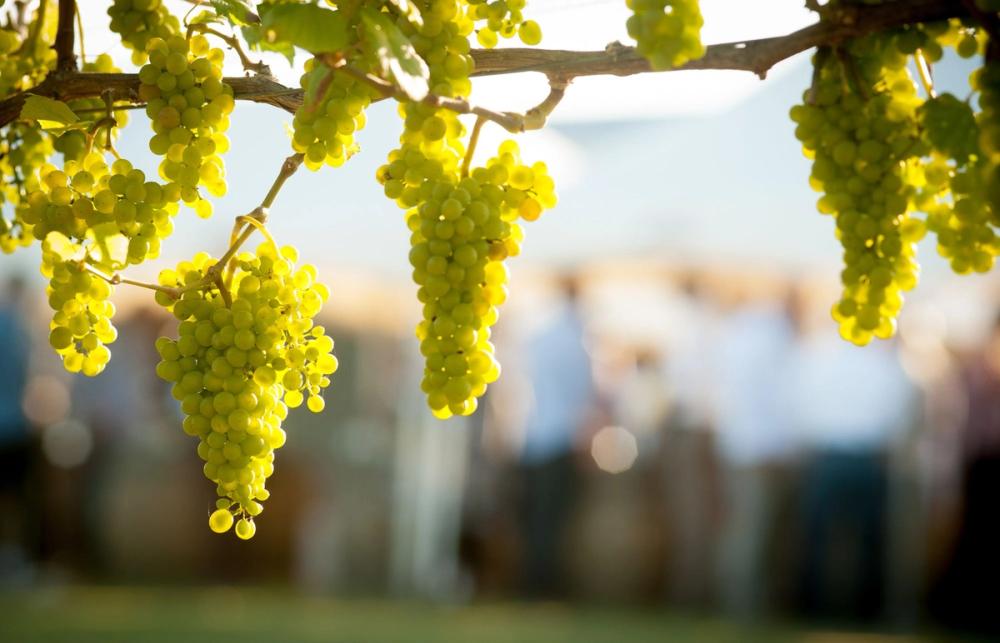
It’s easy to forget that there was a time before New Zealand Sauvignon Blanc
The figures released also continue to cement Sauvignon Blanc as the number one grape variety in the country. It remains by far the most planted variety across the country, with 66% of 2023’s grape crush (NZW Annual Report 2023). Many have commented that diversification away from such reliance is a necessary next step for New Zealand, but it’s not as simple as that. Kiwi Savvy B remains one of the strongest brands in world wine, with its rate of sale in the UK alone around three times that of Sauvignon Blanc from the likes of South Africa or Chile. The demand is still there for all to see.
There will be some of you that will scoff at that demand. Anyone who’s sniffy about Kiwi Sauvignon Blanc…well…you’re an idiot. You just are. It might not be your favourite style of wine in the world. Maybe it’s a bit too in-your-face? Many you’ve just drunk too much of the stuff and you can’t take anymore? But not to recognise its importance to the way we look at wine over the past 45 years or so is just plain silly.
“It’s easy to forget that there was a time before New Zealand Sauvignon Blanc,” recalls Clarke. “It didn’t really hit the UK until February 1984, but immediately became the scourge of the wine snob. It was the birth of wine being a bloody good drink and was an absolute gift for myself and Jilly Goolden (on BBC’s Food & Drink) to stand in front of cameras and describe why these wines were different. For me it’s right up there as one of the most important white wines in modern history.”
The modern styles of Sauvignon produced up and down both islands continue to play with the nuance of terroir available. Within Marlborough itself we’re now so much more aware of the flat valleys south of Blenheim, the varied aspects of Wairau Valley, the exposed sites of Awatere Valley, and the heavier styles of the Southern Valleys. The option is there for big brand wines as well as high end, high class, and elegant wines. Yes, they’re still full of aromatics, they’re still 100% Savvy B, but these winemakers are seriously skilled at what they’re doing and producing wines to grace any restaurant list.
“It’s important not to praise New Zealand for the ripeness,” points out Clarke. “The reason we praise them is for the balance, the elegance, the perfume, the drinkability and the amazing food friendliness.”
New Zealand Pinot Noir continues to impress
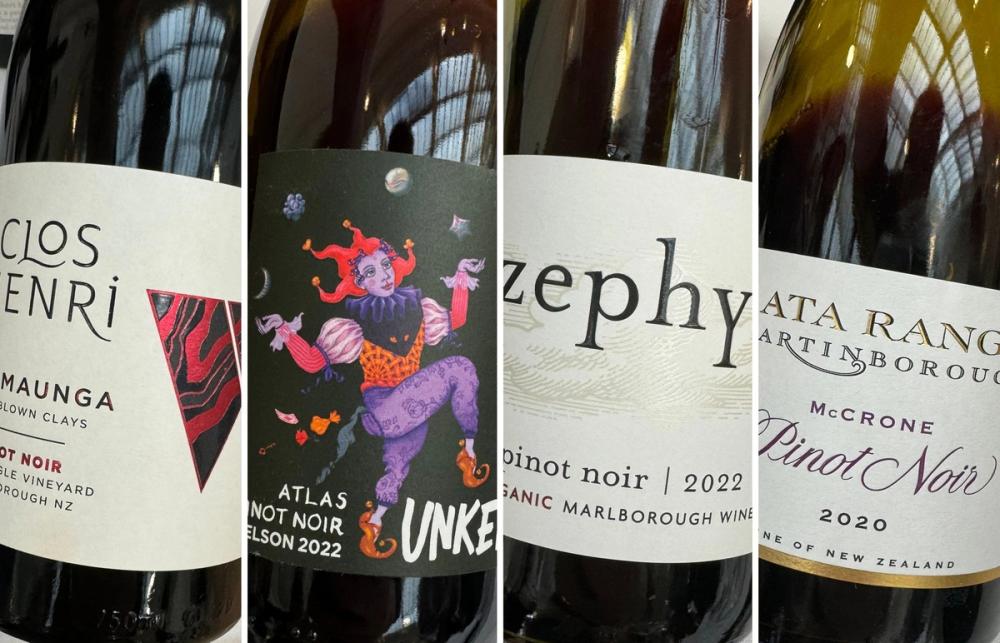
As much as the Sauvignon Blanc juggernaut continues to roll, excitement continues to grow in New Zealand regarding other varieties. We’ve written in the past about the standard of quality Riesling, Pinot Gris, and now stunning Chardonnays on offer. For me, though, it’s the red wines that I love to taste vintage after vintage. In the background to the success of Savvy B, and the other celebrated white wines, red grapes have been planted, experimented with, and continue to find ideal new homes in which to thrive.
Pinot Noir, of course, is the dominant red variety. With fabulous expressions made in diverse locations such as Central Otago, Marlborough, Waipara, Nelson and Martinborugh, it’s no wonder that it’s said that New Zealand has more Pinot Noir styles than Burgundy.
“Pinot Noir lovers around the world should be thanking New Zealand for liberating it from the elitist trap!” enthused Clarke. “Tradition can be a corset, a restraint that impedes evolution, but New Zealand doesn’t have that. The trust in Brand New Zealand means winemakers have got the leeway to try new things and find acceptance on the market.”
Clos Henri’s Single Vineyard Pinot Noir ‘Waimaunga’ 2020 (RRP £33.85, Caves du Pyrene) from Marlborough’s exciting Southern Valley was spicy, tangy, bursting with red fruits and black pepper. Also from the Southern Valleys, wedged in between the northern Wairau Valley and the exposed Awatere Valley, are the Glover Family Vineyards producing the fabulous Zephyr Organic Pinot Noir Single Vineyard 2022 (RRP £25.49, Bancroft). Winemaker Ben Glover praised the virtues of Pinot Noir as the perfect grape to “show the personality of both terroir and producers up and down the country.”
To the north and south of Marlborough you have the Pinot Noir strongholds of Wairarapa and Central Otago. As these areas perfect the sub-terroris we’re seeing really evocative and supremely high classed Pinots, but still with amazing drinkability. I was really impressed with the Akarua Pinot Noir 2022 (RRP £41.00, Goedhuis Waddesdon) from the Bannockburn region of Central Otago, where prices for land are now eye wateringly high but with the quality potential of the wines to match. Lovely intensity of fruit, ripeness and warmth, but with a perfect acidic tension and equally gluggable. As for the Wairarapa in the North Island, it’s always tough to look past the incredible wines from Ata Rangi in Martinborough, with the Ata Rangi McCrone Vineyard Pinot Noir 2020 (RRP £94.99, Liberty Wines) showcasing the quality that earned the iconic Helen Masters such well-deserved international accolades.
The Pinot produced outside of those main regions were also showing beautifully on the day. Greystone Vineyard Ferment Pinot Noir 2021 (RRP £40.00, Seckford Agencies) from cooler North Canterbury had wonderful lifts of herb and pine to go with the juicy fruits. Unkel Wines Atlas Pinot Noir 2022 (RRP £24.00, seeking representation) from the much-fancied Nelson region was a floral delight, with rose petal, strawberry leaf, and fresh pepper spice finish.
Other New Zealand reds rising
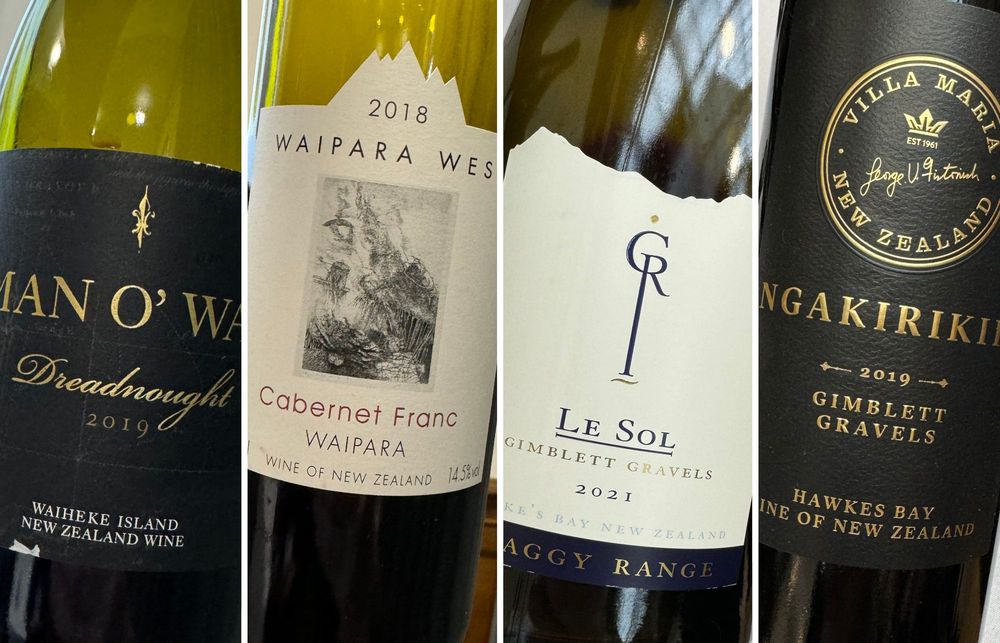
Possibly the most exciting future star of New Zealand is Syrah. With plantings continuing to rise, albeit from a small base, the value spike of sales of New Zealand Syrah in the UK of +33.2% in 2023 outperformed any other varietal. Kiwi wine makers are following the old wine wives’ tale of ‘where there is Pinot Noir, Syrah is next!’. The Man O’War Dreadnought Syrah 2019 (RRP £32.99, Enotria), from the stunning Waiheke Island, was filled with flavour of bacon, balsamic, olives plush red and black fruit, tapenade and garrigue notes. It was Oz Clarke’s pick of the tasting with “almost Cote-Rôtie style aromas” assisted by the winds that sweep across Man O’War’s polyculture paradise on the Northern tip of the island.
Cabernet Franc is another that we are destined to see more of in the future. Across the globe it is now seen as grape variety that is coping far more consistently than many others, including its famous offspring, Cabernet Sauvignon. New Zealand has plenty of warm, wind-swept and dry areas to allow Cabernet Franc to show off its varietal red fruit, graphite, and herbal notes, with Canterbury’s Waipara region gaining a particular reputation. The Waipara West Cabernet Franc 2018 (RRP £19.75, South of the Border) is made from fruit grown in the shadow of the Teviotdale Hills to the east, and the extended hang time on the vine produces a plush, full coating Cab Franc with a ripe, chewy texture.
Also worth keeping an eye on are the smaller production but very worthy wines from the likes of Gamay, Malbec and Merlot. Esk Valley’s Artisanal Hawke’s Bay Gamay Noir 2021 (RRP £21.05, Hatch Mansfield) was juicy, crunchy, cranberries and raspberries, very much Beaujolais without the banana, as well as their River Gravel Merlot, Malbec and Cabernet Sauvignon 2019 (RRP £28.85, Hatch Mansfield) full of perfume, violet, lush dark fruits and coffee bean.
The increasing visibility of superstar brands can only cement the red wines of New Zealand on the international market. Villa Maria’s Ngakirikiri 2019 (RRP £76.60, Hatch Mansfield) majority Cab blend from Gimblett Gravels has attracted big scores from international judges for its plush black fruit, coffee bean, chocolate, cedar complexity, with the full bodied, oaked style (65% new) working as a great contrast to the fresh, gluggable reputation of Kiwi reds. Craggy Range’s Le Sol 2021 (RRP £70.00, Majestic) is a supreme Syrah from the famous Gimblett Gravels in Hawke’s Bay, whose sweet black and blue fruits and herbal lift give way to stunning complexity with age.
A lazy look at the numbers will continue to show New Zealand as heavily reliant on Sauvignon Blanc, but it’s the red wines that are keeping me coming back for more year after year.
For more information about the New Zealand Wine in the UK, please contact Chris Stroud on cstroud@nzwine.com
Mike Turner is a freelance writer, presenter, educator, judge and regular contributor for The Buyer.
Lead image © NZW.Inc.Matawhero

